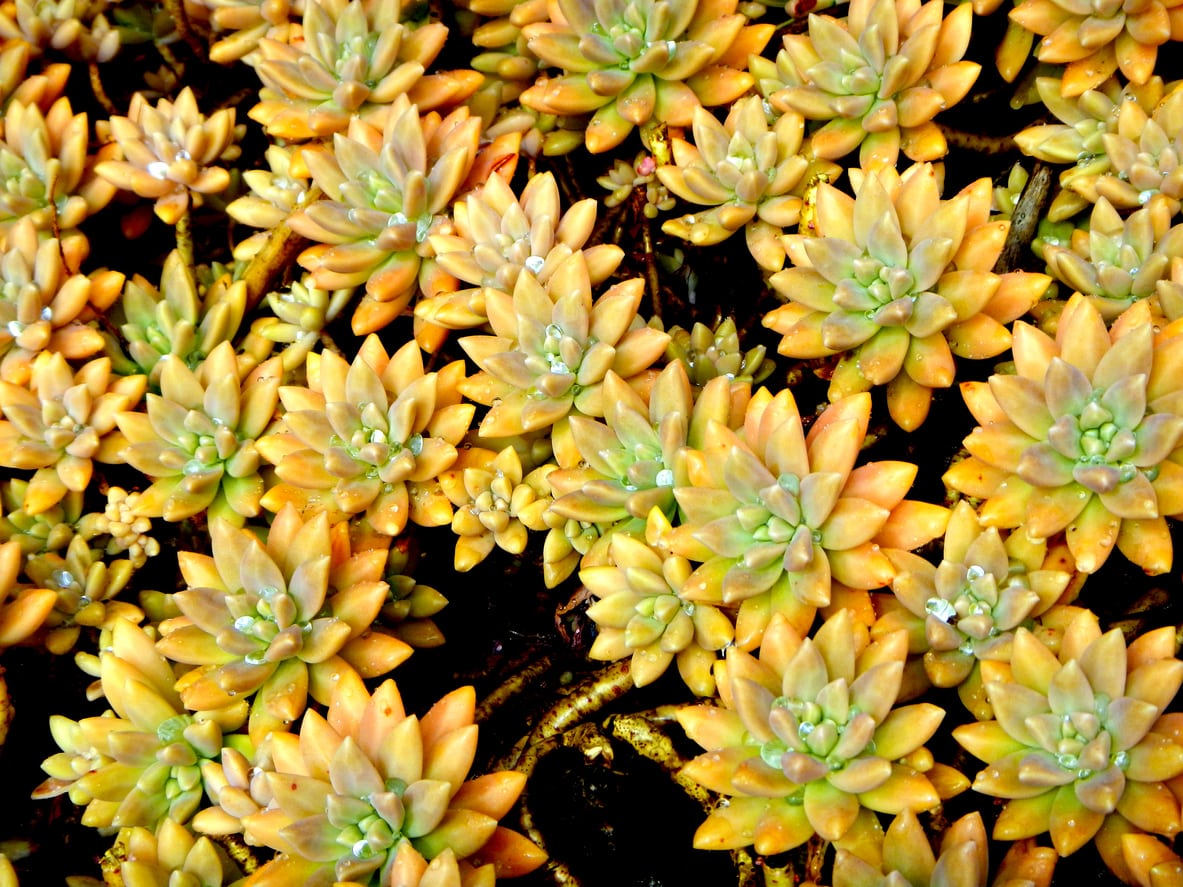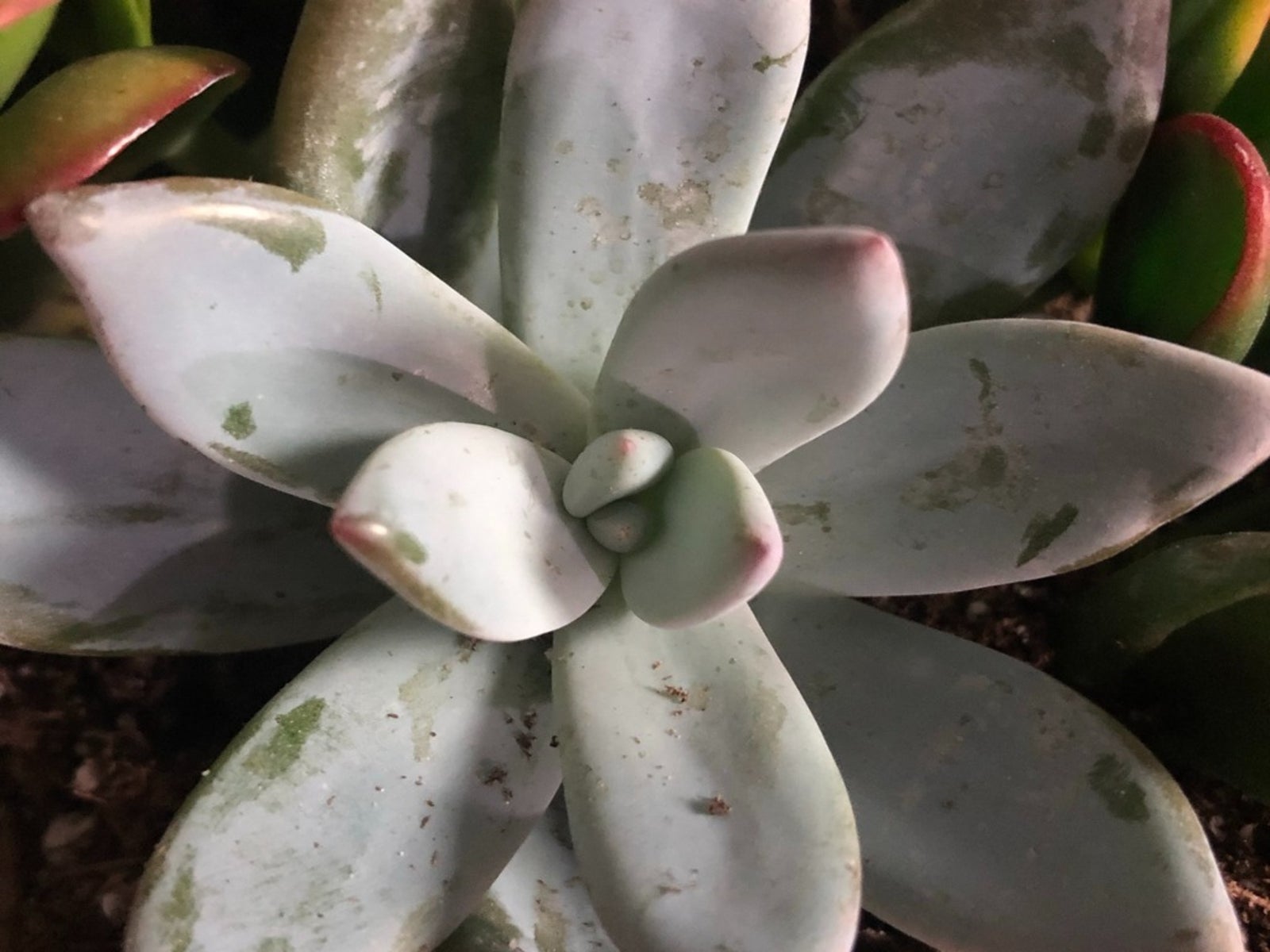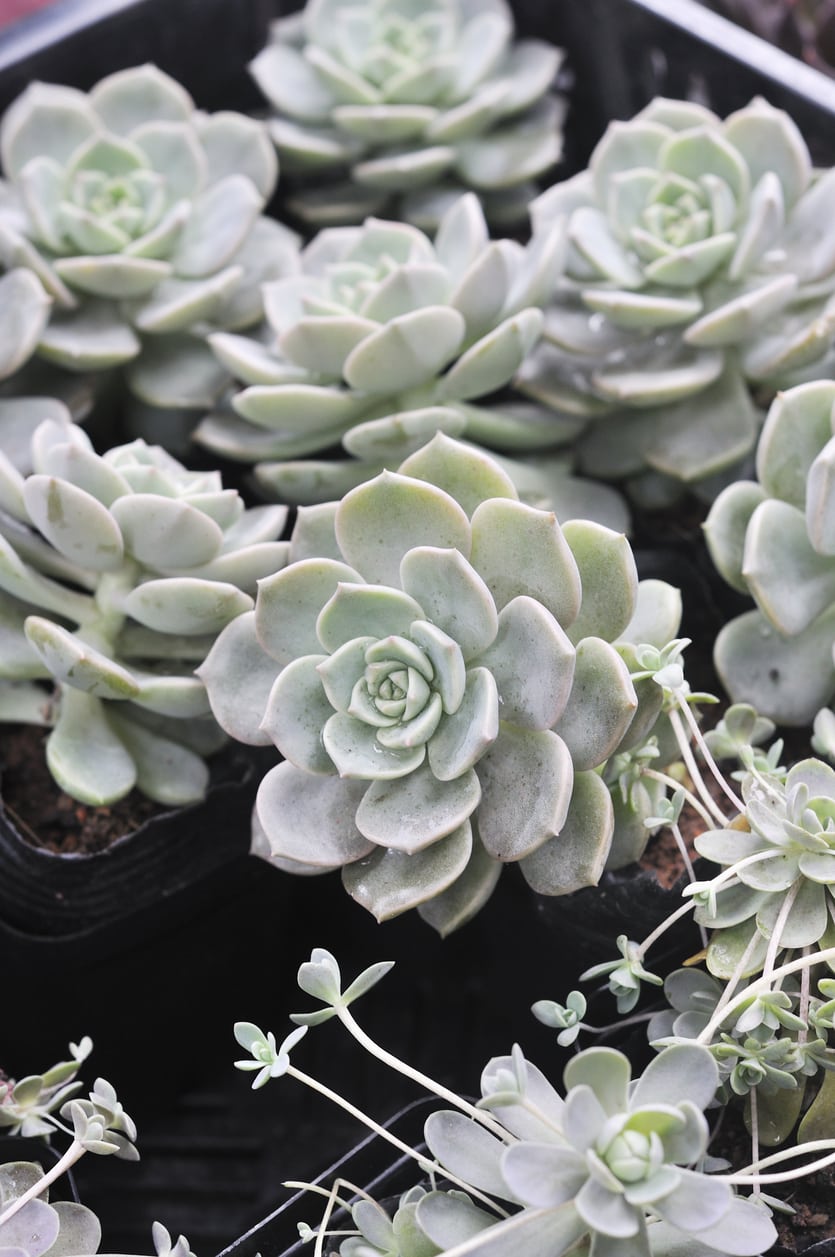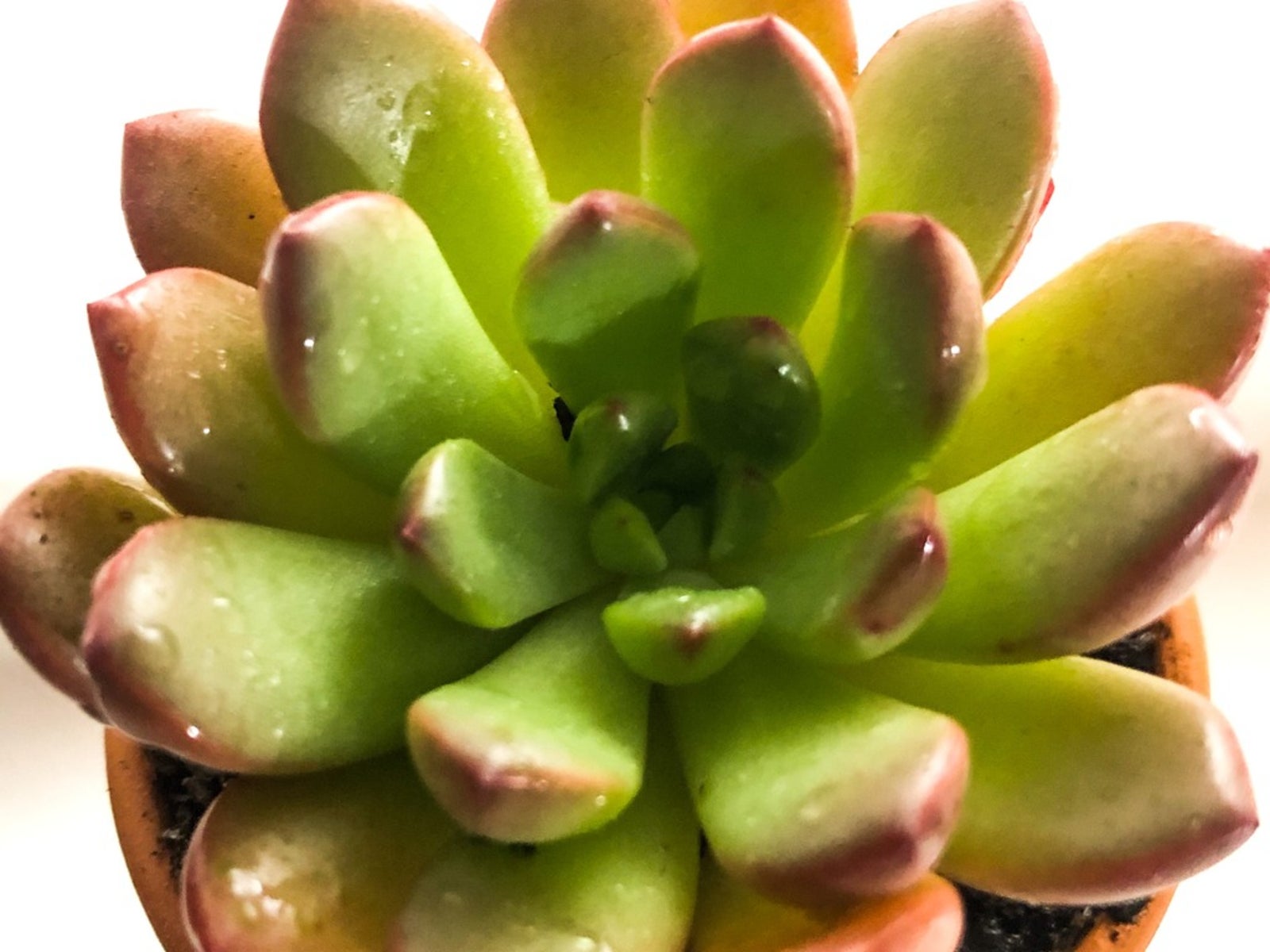Graptoveria Plant Info: Learn About Growing Graptoveria Succulents


Graptoveria is a beautiful variety of succulent plant- compact, plump, and colorful. Favorite types of graptoveria include 'Fred Ives,' ‘Debbi,’ and ‘Fanfare.’ Their showy forms attract collectors, houseplant gardeners, and even new buyers. Perhaps you’re wondering just what is graptoveria? Read more for a description and tips for graptoveria plant care.
What is a Graptoveria?
Graptoveria is a hybrid cross that originated from a combination of Echeveria and Graptopetalum succulent plants. Most exhibit a compact rosette 6 to 8 inches (15-20 cm.) across. Some, such as ‘Moonglow,’ may reach 10 inches (25 cm.) in width. Offsets develop readily, tightly filling out your display. Graptoveria maintains vivid colors when they are somewhat stressed, usually from limited watering or cool temperatures. The frosty pink cultivar ‘Debbi’ becomes a deeper pink and even more frosty when growing in a sunny spot while water is withheld.
Graptoveria Plant Care
Get them situated in a permanent location before temperatures begin to drop. Traditional houseplant gardeners may have difficulty adjusting to the limited watering and providing any type of stress. These actions are required for vivid and intense color of graptoveria succulents and others in this category. Remember, too much water is bad for any succulent plant. Limit watering when plants have established a good root system. While graptoveria specimens need full sunlight, morning sun is generally the most accommodating to make color pop and prevent sunburn. Summer temperatures and sun in the afternoon are sometimes hotter than even succulent plants need. When possible, locate plants in morning sun and provide shade for the afternoon. During the hottest part of summer, some people add shade cloth to structures that house their plants. Buildings, trees, and even other plants can shade graptoveria when properly planted. A soft succulent, graptoveria plant info says these beauties won’t tolerate frost. Bring them indoors when temperatures begin to drop in autumn. Provide sunlight through well-lit windows or install a grow light system for your plants. Don’t make extreme changes when moving your plants. Also, be cautious of the sun shining directly through your windows on newly-located plants.
Gardening tips, videos, info and more delivered right to your inbox!
Sign up for the Gardening Know How newsletter today and receive a free copy of our e-book "How to Grow Delicious Tomatoes".

Becca Badgett was a regular contributor to Gardening Know How for ten years. Co-author of the book How to Grow an EMERGENCY Garden, Becca specializes in succulent and cactus gardening.
-
 Looking For Plants To Give You The Soft And Fuzzies? Try These 5 Fuzzy Leaf Plant Options
Looking For Plants To Give You The Soft And Fuzzies? Try These 5 Fuzzy Leaf Plant OptionsLovers of texture, drama, silver foliage and tactile plants will adore these special sensory garden additions. These fuzzy leaf plant options will leave you all aglow
By Susan Albert
-
 Get Ready For A Summer Of Hummers! Grow These Full Sun Hummingbird Plants and Flowers
Get Ready For A Summer Of Hummers! Grow These Full Sun Hummingbird Plants and FlowersIf you’re lucky enough to enjoy a sunny backyard, make sure you are maxing out on your pollinator opportunities and grow these full sun hummingbird plants and flowers
By Tonya Barnett
-
 Moonglow Graptoveria Care – Learn How To Grow A Moonglow Plant
Moonglow Graptoveria Care – Learn How To Grow A Moonglow PlantGraptoveria ‘Moonglow’ is an especially charming type of succulent. It is a common houseplant with ease of care and interesting foliage. We'll go into some tips on how to grow a Moonglow plant and how to propagate the succulent in this article.
By Bonnie L. Grant
-
 Porcelain Plant Care – How To Grow A Graptoveria Porcelain Plant
Porcelain Plant Care – How To Grow A Graptoveria Porcelain PlantPorcelain plant succulents are small plants ideal for use in a succulent garden. Interested in learning about growing Graptoveria plants? Learn how to grow a Graptoveria and about porcelain plant care in this article.
By Amy Grant
-
 Graptoveria ‘Bashful’ Information – Growing Bashful Graptoveria Plants
Graptoveria ‘Bashful’ Information – Growing Bashful Graptoveria PlantsIf you are charmed by succulents like I am, you will have to get your hands on Graptoveria 'Bashful.' This ground-hugging rosette form is an easy-to-grow, low-maintenance plant that stands in for a flower with its form and color. Learn more in this article.
By Bonnie L. Grant